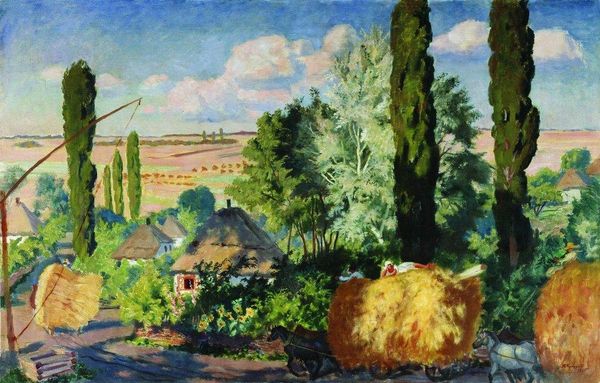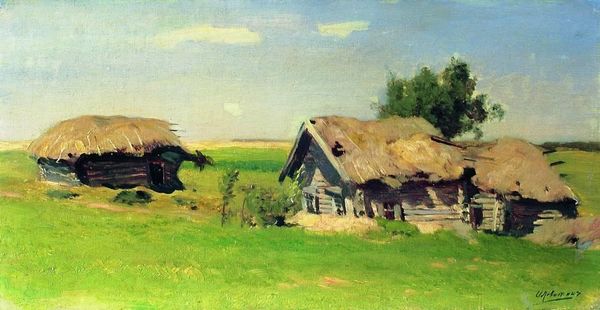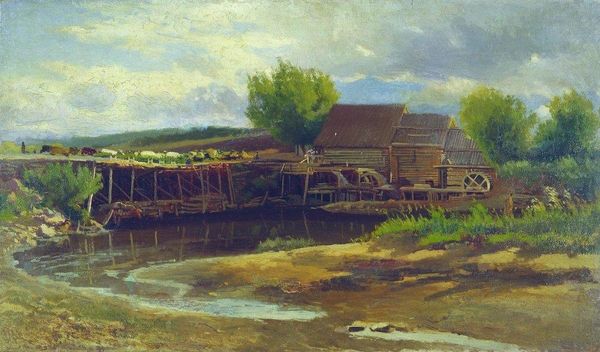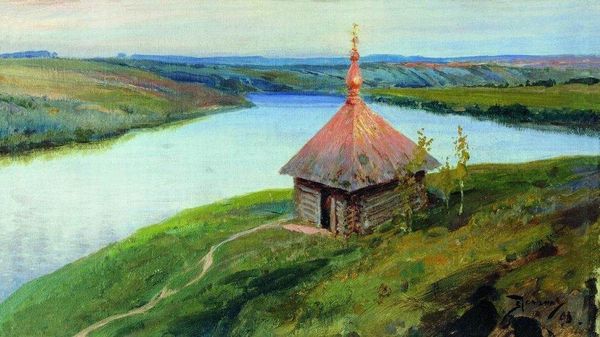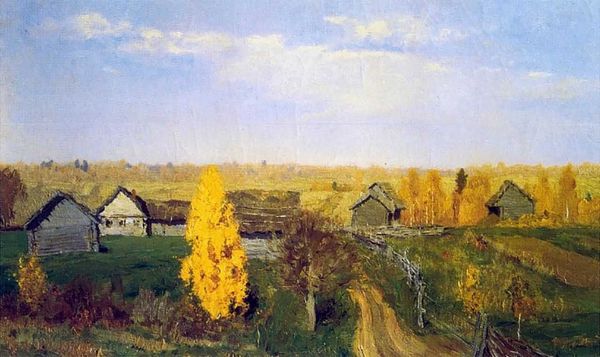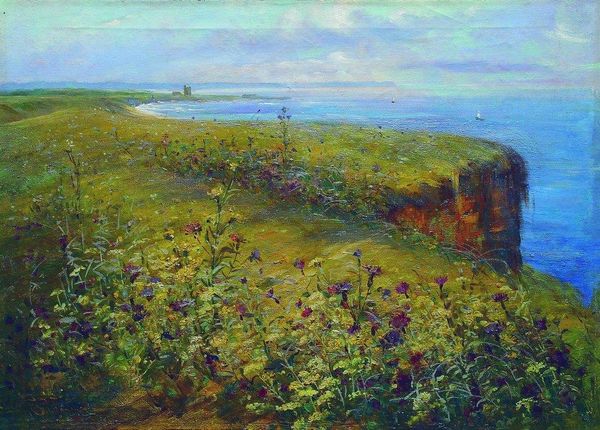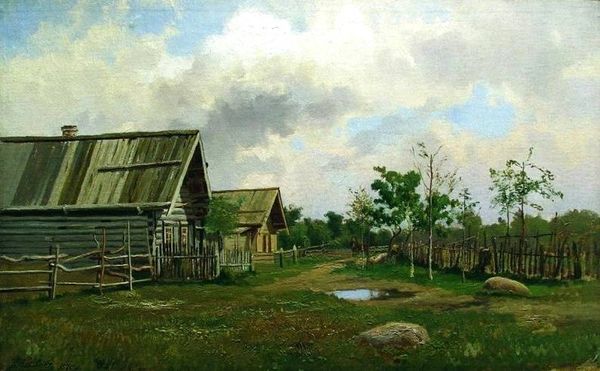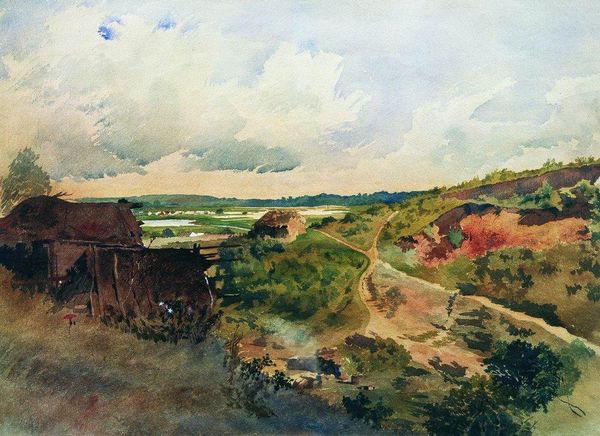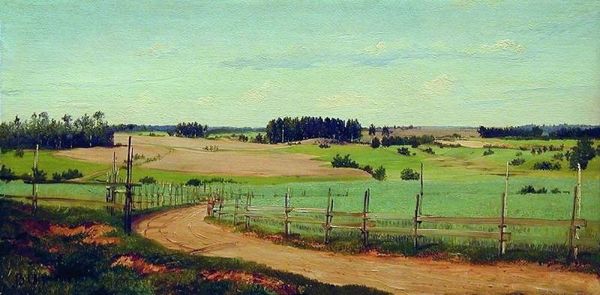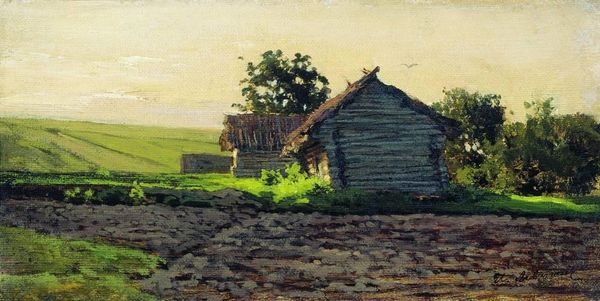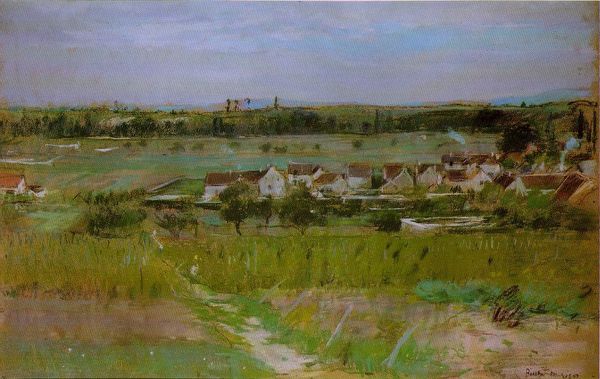
painting, oil-paint, architecture
#
painting
#
oil-paint
#
landscape
#
river
#
nature
#
oil painting
#
water
#
genre-painting
#
architecture
#
realism
Copyright: Public domain
Editor: So here we have Vladimir Makovsky's "Ukrainian landscape with huts," painted in 1901. The oil painting is incredibly tranquil, with its soft greens and blues. It feels like a snapshot of a very specific place. How do you interpret this work in relation to the history and culture of its time? Curator: It’s crucial to see this painting within the context of late 19th and early 20th-century Ukrainian national identity. Makovsky, while Russian, depicts a distinctly Ukrainian scene. Consider the ‘huts’ themselves. What do they tell us about rural life and the romanticized view often presented to the urban audiences? These kinds of images became incredibly important in shaping and reinforcing ideas about national character. Editor: That’s interesting! So, it’s not just a pretty picture; it’s contributing to a larger cultural narrative. Were these rural scenes common in art at the time? Curator: Absolutely. There was a deliberate effort to promote rural imagery in many European countries, including Russia and Ukraine, which was then part of the Russian Empire. These images, disseminated through art exhibitions and reproductions, often served to construct a sense of national unity. Ask yourself, who benefited from that unified identity, and who may have been left out of this idealized picture? Editor: So the painting might be reflecting a particular political or social agenda, rather than being a purely objective view? Curator: Exactly! These seemingly innocent landscapes played a crucial role in the political landscape, shaping perceptions of Ukrainian identity both within the region and internationally. The romantic, picturesque scenery actually obscures complexities and potential socio-economic issues prevalent at the time. Editor: I never would have considered that! I see it with new eyes now. Curator: Thinking about art in its historical and social context allows us to question its role, not just appreciate its aesthetics. It also helps to investigate art through ideological context rather than art for art’s sake.
Comments
No comments
Be the first to comment and join the conversation on the ultimate creative platform.
